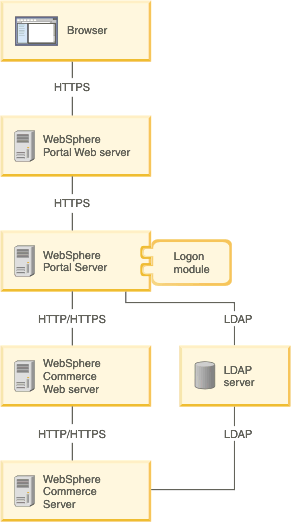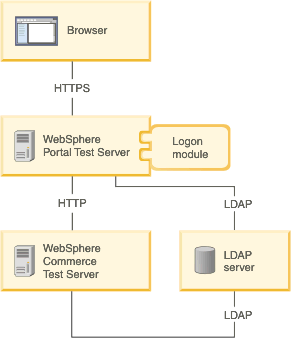 Deprecated feature
Deprecated feature



Basic authentication
See Configuring WebSphere Portal with WebSphere Commerce for more information.
Basic authentication is an authentication method that is designed to allow client programs to provide credentials - in the form of a user name and password - when making a request. Although the scheme is easily implemented, it relies on the assumption that the connection between the client and server computers is secure and can be trusted. Specifically, the credentials are passed as plain text and could be intercepted easily.
The scheme also provides no protection for the information that is passed back from the server. To prevent the user name and password being read directly by a third party, you can configure the WebSphere Portal-WebSphere Commerce connection to use SSL. Because WebSphere Commerce and WebSphere Portal are running on two different servers, basic authentication is used to perform single sign on (SSO) from WebSphere Portal server to WebSphere Commerce Server. This is done by making use of a Java Authentication and Authorization Service (JAAS) login module to capture the WebSphere Portal user name and password while signing into the WebSphere Portal server. This JAAS login module is provided with the MVC Portlet.Basic authentication in a production environment

This single sign-on mechanism has the following requirements:
- You must install a WebSphere Portal server.
- You must enable global security for the WebSphere Portal server.
- You must deploy the WebSphere Commerce logon module into the WebSphere Portal application.
- You must share the user repositories using the LDAP server with the WebSphere Portal and WebSphere Commerce Servers.
The WebSphere Portal server communicates with the WebSphere Commerce Web server with WebSphere Commerce Web services. For non-secure communication, port 8007 is used. For secure communication, the WebSphere Commerce tools port (typically port 8006) is used.
Basic authentication in a test environment
Basic authentication is also a possible single sign-on mechanism for a test environment.

This single sign-on mechanism has the following requirements:
- You must have a WebSphere Portal test server within Rational Application Developer version 7.5 installed.
- You must enable global security for the WebSphere Portal test server.
- You must deploy the customized logon module into the WebSphere Portal test server.
- You must install WebSphere Commerce Developer.
- You must share the user repositories using the LDAP server with the WebSphere Portal and WebSphere Commerce test environments.
The WebSphere Portal server communicates with the WebSphere Commerce Web server for WebSphere Commerce Web services using a non-secure port (port 80).